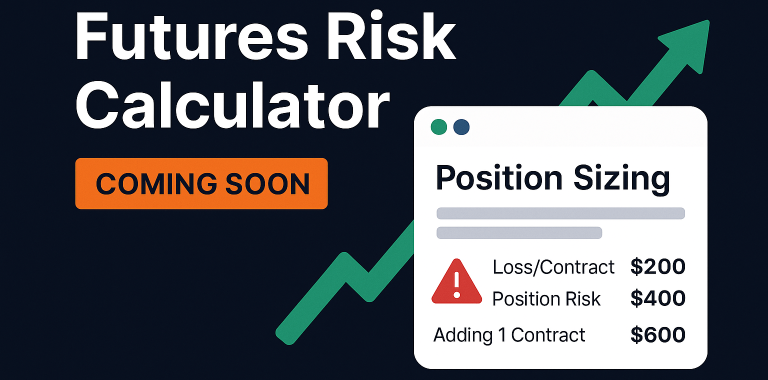Which trading market fits your goals?
Every trader asks the same question: “What should I trade?” The answer depends on your experience level, available time, risk tolerance, and starting capital. Here’s an honest comparison of the major markets without the sales pitch.
The Big Picture: All Markets Compared
| Market | Best For | Time Commitment | Starting Capital | Risk Level |
|---|---|---|---|---|
| Stocks | Beginners, Long-term wealth | Part-time friendly | $500-1,000 | Low-Medium |
| Forex | 24-hour flexibility | Any schedule | $100-500 | Medium |
| Crypto | Risk-tolerant traders | 24/7 monitoring | $100-500 | High |
| Futures | Experienced traders | Full-time attention | $1,000-5,000 | High |
| Options | Advanced strategies | Flexible | $500-2,000 | Medium-High |
Stock Market: The Foundation
What you’re trading: Shares in individual companies
Market hours: 9:30 AM – 4:00 PM ET (Mon-Fri)
Best for: Building long-term wealth, learning fundamentals
Why Stocks Are Beginner-Friendly
Logical price movements – Apple goes up when iPhone sales are strong
Abundant information – Every major company is covered extensively
Lower volatility – Less likely to lose 50% overnight
No expiration dates – You can hold forever if needed
Dividend income – Some stocks pay you to own them
Stock Market Drawbacks
Limited trading hours – Miss moves while you sleep
Company-specific risk – Earnings surprises can crush individual stocks
Slower moves – May take weeks or months to see significant gains
Higher capital requirements – Good stocks cost $50-500+ per share
→ [Learn Stock Trading →]
Forex Market: Currency Pairs
What you’re trading: One currency against another (EUR/USD, GBP/JPY)
Market hours: 24 hours, 5 days a week
Best for: Traders who want flexible schedules
Forex Advantages
Always open – Trade London morning or Tokyo midnight
High liquidity – Massive market, easy to get in and out
Lower capital requirements – Start with $100-500
Economic focus – Trade based on country fundamentals
Leverage available – Control larger positions (use carefully)
Forex Challenges
Complex relationships – USD/JPY affected by both US and Japanese data
Leverage temptation – Easy to over-leverage and blow accounts
No dividends or ownership – Pure price speculation
Macro-driven – Requires understanding of global economics
→ [Learn Forex Trading →]
Crypto Market: Digital Currencies
What you’re trading: Bitcoin, Ethereum, and thousands of altcoins
Market hours: 24/7, never closes
Best for: Risk-tolerant traders comfortable with volatility
Crypto Benefits
Never closes – Trade Christmas morning if you want
High volatility – Large moves create opportunities
Low barriers to entry – Buy $10 worth if you want
Growing adoption – Long-term potential as technology evolves
Global access – Same market worldwide
Crypto Risks
Extreme volatility – 30% daily moves are normal
Regulatory uncertainty – Governments still figuring out rules
Security concerns – Exchanges get hacked, wallets get lost
Manipulation – Smaller market, easier for whales to move prices
Emotional trading – FOMO and panic drive most decisions
→ [Learn Crypto Trading →]
Futures Market: Contracts for Later
What you’re trading: Agreements to buy/sell commodities, indices, currencies at future dates
Market hours: Nearly 24 hours across different contracts
Best for: Experienced traders who understand leverage
Futures Advantages
True price discovery – No market makers, pure supply/demand
High leverage – Control large positions with small capital
Diverse options – Trade oil, gold, wheat, stock indices, bonds
Tax advantages – Favorable treatment for active traders
Professional tools – Sophisticated platforms and data
Futures Risks
Leverage magnifies losses – Can lose more than you deposit
Margin calls – Broker can force you to add money or close positions
Expiration dates – Contracts expire, must roll or close
Complex mechanics – Contango, backwardation, roll costs
High minimum requirements – Need substantial capital
→ [Learn Futures Trading →]
Options Market: Rights to Buy/Sell
What you’re trading: Contracts giving you the right (not obligation) to buy/sell stocks at specific prices
Market hours: Same as stock market (9:30 AM – 4:00 PM ET)
Best for: Traders who want defined risk strategies
Options Benefits
Limited risk – Most strategies cap your maximum loss
Flexible strategies – Profit from up, down, or sideways moves
Lower capital requirements – Control expensive stocks cheaply
Income generation – Sell options for consistent premiums
Hedging tool – Protect existing stock positions
Options Complexity
Time decay – Options lose value as expiration approaches
Multiple variables – Price, time, volatility all affect value
Strategy overload – Hundreds of possible combinations
Assignment risk – Can be forced to buy/sell stocks
Learning curve – Takes time to understand mechanics
→ [Learn Options Trading →]
Market Correlations: How They Connect
During Normal Times
Stocks and bonds – Often move opposite directions
Dollar and commodities – Strong dollar usually hurts gold, oil
Risk-on vs risk-off – Growth stocks vs. safe havens
During Crisis
Everything falls together – 2008, March 2020 showed all markets can crash simultaneously
Flight to safety – Money flows to US Treasuries, gold, cash
Currency impacts – Safe haven currencies (USD, JPY, CHF) strengthen
Which Market Should You Choose?
For Complete Beginners
Start with stocks – Easiest to understand, most educational resources
Avoid crypto and futures – Too volatile and complex
Consider forex – If you want 24-hour flexibility
Skip options initially – Learn stocks first, then add options
For Part-Time Traders
Swing trading stocks – Hold for days/weeks, don’t need constant monitoring
Forex during your free hours – Trade London open before work, etc.
Avoid day trading – Requires full-time attention
Consider crypto – If you can handle the volatility
For Full-Time Traders
Day trading stocks – Highest volume, most opportunities
Futures trading – Professional tools and true price discovery
Multi-market approach – Trade correlations between different assets
Advanced options strategies – Income generation and hedging
Risk Management Across Markets
Universal Rules
Never risk more than 1-2% of your account per trade
Use stop losses in every market
Diversify across positions – Don’t put everything in one trade
Understand leverage – It amplifies losses as much as gains
Market-Specific Risks
Stocks – Earnings surprises, sector rotation
Forex – Central bank interventions, political events
Crypto – Regulatory announcements, exchange hacks
Futures – Margin calls, forced liquidations
Options – Time decay, assignment risk
Getting Started: Your Action Plan
Step 1: Choose Your Primary Market
Pick ONE market to focus on initially. Don’t try to trade everything at once.
Step 2: Learn the Basics
Read our detailed guide for your chosen market. Understand the mechanics before risking money.
Step 3: Choose Your Broker
Different markets require different brokers. We have detailed comparisons for each market.
Step 4: Start Small
Begin with the minimum position sizes. Focus on learning, not making money initially.
Step 5: Expand Gradually
Once profitable in one market, consider adding others. But master one first.
Common Multi-Market Mistakes
Spreading Too Thin
Mistake: Trading stocks, forex, and crypto simultaneously as a beginner
Reality: You won’t learn any market properly
Solution: Master one market before adding others
Chasing Hot Markets
Mistake: Jumping to whatever market is trending
Reality: By the time you hear about it, the opportunity is often over
Solution: Pick based on your lifestyle and risk tolerance, not current performance
Ignoring Correlations
Mistake: Going long USD/JPY and short Nikkei without realizing they’re correlated
Reality: You’ve doubled your Japan exposure without knowing it
Solution: Understand how different markets affect each other
Bottom Line: Start Simple, Expand Smart
The best market for you is the one that:
- Matches your available time
- Fits your risk tolerance
- Aligns with your capital
- Interests you enough to study
Don’t get paralyzed by choices. Pick one market, learn it thoroughly, then consider adding others. Every successful trader started with a single market and expanded from there.
Ready to dive deeper? Choose your market and start with our detailed trading guides:
→ [Stock Trading Guide →] – Build long-term wealth
→ [Forex Trading Guide →] – 24-hour currency markets
→ [Crypto Trading Guide →] – Digital currency opportunities
→ [Futures Trading Guide →] – Professional derivatives trading
→ [Options Trading Guide →] – Flexible risk-defined strategies
No Tilt Trading – Trading Without the Noise

